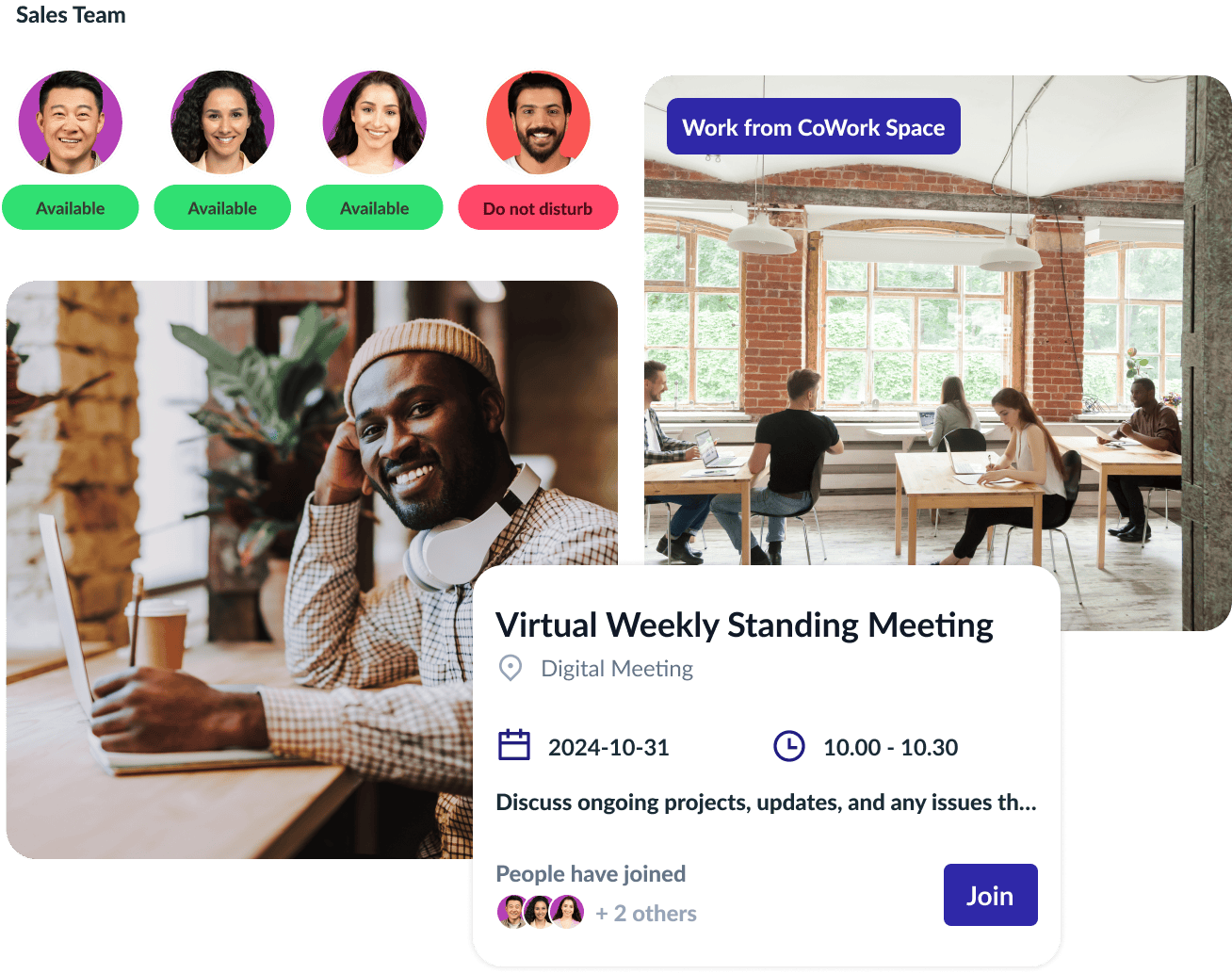
Understanding Employee Engagement
An engaged workforce boosts productivity and success. Discover proven methods to keep your team motivated and connected.

Once a rarity, working from home has become mainstream in recent years. Many companies have discovered the benefits of broadening their pool of prospective hires. Many employees are demanding the flexibility that remote work provides as they seek work-life balance. In fact, more than a third of the global workforce is now fully remote (7.9%) or works from home some of the time (25.6%), according to a WFHResearch survey.
Given the changing employment landscape, including mass layoffs and scarcity of local opportunities, many job seekers are exploring remote work opportunities for the first time. This comprehensive guide aims to provide insights about working from home and actionable tips to find and apply for remote jobs with confidence.
Remote work is a work arrangement, also known as telecommuting or work-from-home, that allows employees to perform job duties outside of a traditional office environment. Remote employees can work from home, in a coworking space, or any other location with internet access.
The rise of digital technology and communication tools has made working from home more feasible and popular in recent years, which presents both pros and cons for employees and employers.

For Employees:
For Employers:

For Employees:

For Employers:
Job seekers who want to work from home have two primary choices. They can find companies that offer these positions, or they can pursue self-employment options.
Freelancing is a popular form of remote work where individuals deliver services to clients on a contractual basis rather than working for the company as a direct employee. This option can involve setting up a formal, stand-alone company or working as an independent contractor to provide skills and expertise on a freelance, fractional or consultant basis.
Many companies offer work-from-home opportunities, including full-time remote positions or hybrid roles that combine remote and in-office work. Working remotely for an employer provides more stability and benefits compared to freelancing, but it may come with less flexibility.
The opportunity to choose between working for an employer directly or branching out into freelance/independent contractor roles depends on individual skill sets, experience, and market demand for that expertise. Here are a few things to keep in mind.
Traditional Employment
Self Employment
Schedule Flexibility
Employees may have to adhere to set work hours, which can limit flexibility.
Freelancers can set their hours and work when they’re most productive.
Income Potential
Employees receive a stable, consistent paycheck, including paid time off for vacation and sick leave.
Freelancers can command significantly higher rates but may experience income fluctuations depending on clients, projects, and time off.
Taxes and Benefits
Employers often provide a suite of benefits (e.g., health/life insurance, retirement plans) and handle tax collection.
Freelancers are responsible for their own benefits and taxes, which can be complex and time-consuming.
Project Diversity
Employees focus on the tasks and responsibilities outlined for their role.
Freelancers can select a variety of clients and projects that align with their skills and interests.
Training/Development
Employers often provide resources, training, and support to their employees with an eye toward promotions and career advancement.
Identifying and paying for career development rests on the freelancer’s shoulders, but career paths aren’t limited to a corporate framework.
Formality
Employees must comply with company policies and align with company culture.
Successful freelancers will mirror their clients’ policies and culture but have more flexibility.
Equipment and Other Expenses
Employers may provide equipment, reimbursement, or stipends to cover costs associated with working from home.
Freelancers are responsible for paying for equipment and expenses. These costs are often tax deductible.
Transitioning from an in-office environment to working from home can be challenging and rewarding. Here are a few considerations to ensure success.
Before accepting a remote position, get a clear understanding of expectations. For example, are you expected to work set hours, or is your schedule flexible? What equipment (e.g., laptop, monitor) will the employer provide? Does the company reimburse expenses, like internet and cell phone service, or are these out-of-pocket costs? Also, ask about how performance will be measured and evaluated. Knowing the expectations and goals will help with focus and motivation.
Create a dedicated home office focused on productivity. Select a spot in your home that's free from noise and distractions. This could be a separate room or a designated corner in a larger space. Just make sure there's good lighting. Natural light is ideal, but if that's not an option, use bright, non-glare lighting to reduce eye strain. Also, invest in ergonomic furniture. People who transition to working from home often skip this step, but getting a comfortable chair and desk is money well spent.
Reliable technology is the backbone of remote work. A stable, fast internet connection is essential. Consider upgrading to a high-speed plan and using a wired connection for better reliability. Most companies will provide the computer equipment and software needed, but be sure to ask about security protocols (e.g., VPN or two-factor authentication requirements) and preferred communication tools (e.g., instant messaging, video calls). Also, have a backup plan for internet or power outages, such as a mobile hotspot, spare batteries, or an alternate location to work.

Establish clear boundaries with friends and family. Communicate work hours to help manage expectations and minimize interruptions. Consider using a "do not disturb" sign during important calls and meetings or when a deadline is looming. Also, ensure pets have toys or activities during work hours. Of course, taking time throughout the day to attend to their needs can provide a few well-needed breaks—one of the perks of working from home.
Maintaining focus can be challenging when working from home. Establish a daily routine to provide structure to your workday. Consistent start and end times can help with organization and time management and prevent burnout from working too many hours. Remote workers often struggle to shut down from work since they never technically leave the office. Carving out time limits and a dedicated space can fend off workaholic tendencies. Also, use tools like time trackers, task managers, and noise-cancelling headphones to enhance focus.

While many companies have incorporated working from home into their workforce, and some have even gone fully remote (16% according to Forbes), its adoption isn't universal. Here are a few of the types of companies and roles that are leading the pack.
Top Industries for Remote Work
(Source: Forbes)
Popular Work-From-Home Job Postings
(Source: Forbes)
Where To Find Remote Jobs
Finding remote positions has never been easier. Top job boards, like Indeed, LinkedIn, and Glassdoor, all provide the ability to search and filter openings based on whether a role is remote or hybrid. There are also several options dedicated to remote work, including:

Unfortunately, the rise in remote work has also grabbed the attention of scammers. Here are some red flags to watch out for:
Unsolicited Job Offers: Be wary of job offers you didn't apply for. Legitimate employers typically follow a formal hiring process.
Upfront Fees: Legitimate employers will never ask for money upfront for equipment or training. Be cautious of any job offer that requires payment before starting work.
Too Good to Be True: If a job offer seems too good to be true, it probably is. Research the company to verify its legitimacy. Look for reviews from current or former employees.
It's essential to tailor resumes and cover letters when applying for any role. Still, remote jobs offer several opportunities to customize applications to show off relevant skills and experience, including:
Highlighting previous remote work experience. Note "remote" beside relevant roles on your resume or LinkedIn profile.
Demonstrating proficiency in tools and technologies commonly used in remote-work environments, such as Slack, Teams, video conferencing, and project management tools (e.g., JIRA, Asana, Trello).
Emphasizing soft skills, such as time management, communication, and self-motivation.
Screening for most remote jobs is conducted through video interviewing software, which require additional considerations beyond their onsite counterparts. Here are a few video interview tips:
Test Technology: Ensure your computer, camera, microphone, and internet connection are working properly. Conduct a test call to check for any technical issues.
Choose a Professional Background: Select a tidy, neutral background for your video call. Avoid distractions and ensure good lighting.
Dress Professionally: Wear appropriate attire as you would for an onsite interview.
Practice Answers: Prepare for popular interview questions with examples to demonstrate skills and experience. If it's pre-recorded video interviewing software, practice timing your responses to build confidence.
Check out Mastering the Art of the Digital Interview for additional guidance.
Working from home offers numerous benefits, including improved work-life balance, cost savings, increased productivity, and the opportunity to work for companies outside your local area. However, remote work isn't for everyone. Home environment, technology constraints, and preferences for face-to-face interactions can all play a role in whether remote work is a good fit. Take an honest self-assessment of your strengths and weaknesses to determine which option – fully remote, hybrid, or traditional in-office – is best for you.
It can. Many remote workers enjoy not having to commute, giving them more time at home with friends and family. But it’s essential to establish boundaries, such as setting a specific schedule and having a dedicated workspace. Otherwise, you risk burnout from working too many hours and never completely “clocking out” since your home is now your office.
Remote workers often report feeling happier, seeing an increase in their productivity, and being able to better manage their work and personal lives. Additional benefits are cost savings (e.g., commute and meal expenses) and the ability to work for companies across the globe.
Remote employees may feel isolated and disconnected from coworkers, and many find it difficult to concentrate due to distractions and interruptions at home. Technological issues can also be a challenge. Having access to reliable, high-speed internet is a must.
Modernize your hiring process with expert insights and advice.